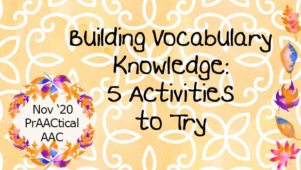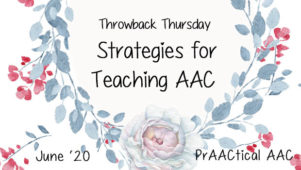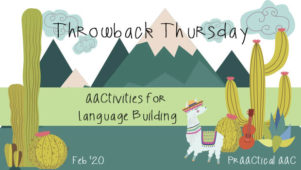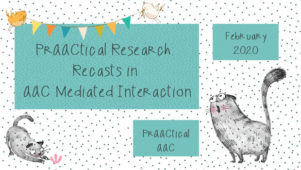Supporting Language Growth in AAC Learners: Part 3
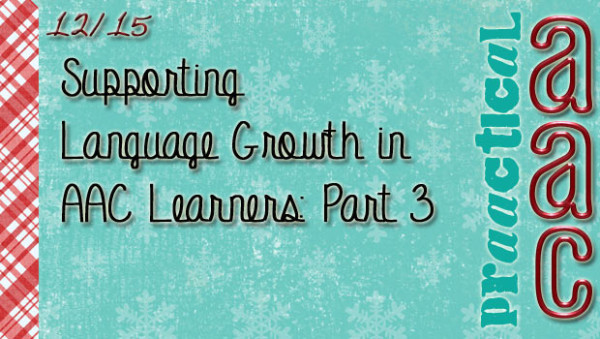
In some earlier posts, we looked at conversations with AAC learners who communicate with single words or short utterances, and began thinking about ways to stretch their language learning. In this post, we’ll continue to explore ways in which our intervention can facilitate language growth. Let’s start with an example of a typical conversation between an AAC learner and his/her therapist.
Activity: Book reading [with aided language input]
- SLP: Look at all these animals! [Expectant pause]
- Marcus: Bird.
- SLP: Yes, lots of birds there. Those are seagulls. What else do you see?
- Marcus: Fish.
- SLP: It looks like a fish. That’s a dolphin. Dolphins are mammals. Remember from Ms. Louis’s class when you read Day of the Dolphins?
- Marcus: Swim
- SLP: Yes, they are really good swimmers.
From the standpoint of shared meaning, this conversation has some good features. But even just reading the dialogue online, I bet you got the sense that Marcus had many more ideas about the book than what he was able to express. There are lots of ways that therapists can improve on conversations like this to build language skills. Let’s look at examples targeting three specific areas: increasing MLU, developing morphological skills, and advancing syntactic abilities.
Expanding Sentence Length
- SLP: Look at all these animals! [Pause]
- Marcus: Bird.
- SLP: Yes, that bird is …
- Marcus: Fly.
- SLP: Exactly! [Pause] Put it together.
- Marcus: Bird fly.
- SLP: That’s right. That bird IS flying, isn’t she? I wonder where that bird is flying to. Maybe she’s hunting for food or going home to her babies. Do you have a guess about that?
- Marcus: Home
- SLP: You could be right. Home to…[Pause]
- Marcus: [No response]
- SLP: Home to…her nest. You can add that to your sentence.
- Marcus: Bird fly home.
- SLP: I love it! That seagull bird might be flying home. She looks like she’s in a hurry, doesn’t she? I’m going to write that sentence down.[Bird fly home]
Morphology
- SLP: Look at all these animals! [Pause]
- Marcus: Bird.
- SLP: Yes, I see the bird. [Pause] Look, there are more over here. How can we change ‘bird’ to show more than one bird?
- Marcus: [No response]
- SLP: Hmm. Let’s think about the ending of the word. Where do we go to change that?
- Marcus: [looks at the appropriate area of his SGD]
- SLP: Okay, so let’s see what our options are. [goes to area for morphological options] We’ll listen to all of them and then you decide which one to keep to make it more than one.
- Marcus: Birds.
- SLP: Good for you! An ‘s’ at the end turns ‘bird’ into ‘birds.’ Lots of birds on this page….
Syntax
- SLP: Look at all these animals! [Pause]
- Marcus: Bird.
- SLP: Yes, lots of birds there. Those are seagulls. What else do you see?
- Marcus: Fish.
- SLP: Yeah. Let’s put them together into a big sentence. We can use our joining word, ‘and.’ I’ll start the sentence and you finish it. ‘The beach has lots of creatures. We found a…’
- Marcus: Bird and fish.
- SLP: Exactly! We found a bird and a fish.
Taken by themselves, these conversations aren’t sufficient to teach the target skill, but changing them to focus on a specific language structure gets the ball rolling. More explicit instruction, multiple examples, and focused language stimulation would all be needed to help the learner move toward more sophisticated verbal expression. Still, they’re a start, and that’s a good thing. Have you had success in helping AAC learners build their language skills? We’d love to hear about it.
Filed under: PrAACtical Thinking
Tagged With: language intervention
This post was written by Carole Zangari

